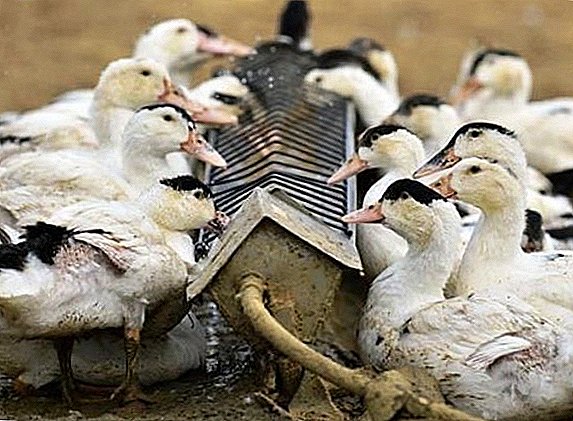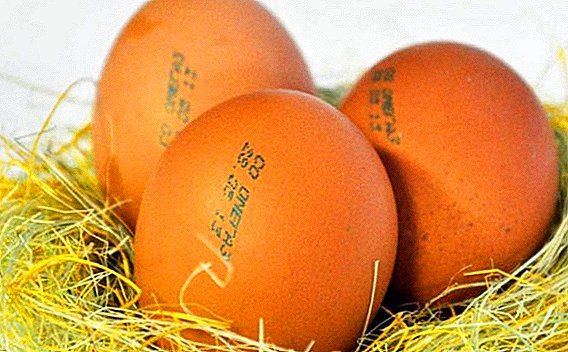 Egg is one of the main food products of many countries. But despite the popularity of this product, people often face the problem of their choice. It turns out that chicken eggs come in several categories, each of which has its own shelf life and many others that are incomprehensible to most of the information. Consider what eggs are and how to choose them.
Egg is one of the main food products of many countries. But despite the popularity of this product, people often face the problem of their choice. It turns out that chicken eggs come in several categories, each of which has its own shelf life and many others that are incomprehensible to most of the information. Consider what eggs are and how to choose them.
Allowable shelf life
The period of storage of goods - this is the first thing on which we usually focus our attention upon purchase. Chicken eggs are no exception. Depending on the time elapsed after chicken laying, they are usually divided into two types: diet and dining. 
Dietary "D"
To dietary include specimens the shelf life of which does not exceed 7 days, not counting the day the chicken was laid. However, they should not be at minus temperatures. Moreover, this species should have a compacted protein, the same colored yolk, and also the height of the space occupied by air, not more than 4 mm. The shell of such testicles must be clean, a small presence of points or strips on it is permitted.  You can recognize this product on the counter by the stamp of red color on the shell, on which the letter "D" is present. Thus, this species is not a specific variety or species — it is just the freshest eggs.
You can recognize this product on the counter by the stamp of red color on the shell, on which the letter "D" is present. Thus, this species is not a specific variety or species — it is just the freshest eggs.
Did you know? The laying hen on average brings 250-300 eggs in 12 months. To carry one testicle, it needs a little more than a day.
Dining "With"
For dining it is customary to take copies that are stored at the temperature of the dwelling. no more than 25 days from the date of their sortingNot counting the day of their demolition, or stored in refrigerators no longer than 90 days. This product has a mobile yolk, a small density of protein and the height of the space occupied by air, more than 4 mm, which, as a rule, ranges from 5 to 7 mm.  When points and strips are present on the shell, their total number should not occupy more than 12.5% of the total surface. On the shell of each table eggs put a stamp in blue with the designation of a capital letter "C" and its category.
When points and strips are present on the shell, their total number should not occupy more than 12.5% of the total surface. On the shell of each table eggs put a stamp in blue with the designation of a capital letter "C" and its category.
Learn more about chicken eggs: what is the benefit, is it possible to eat raw; what is useful for egg shells and how to use it in the feed for the garden and vegetable garden; requirements for eggs; How to check the freshness of eggs at home (in water).
Categories of chicken eggs and their weight
So, we all know what are the types of chicken eggs and what is their difference. Now let's try to sort out their categories. The key criterion by which eggs are classified as one or another category is their weight, therefore, according to modern GOST, there are 5 main categories. 
Highest Category (B)
This category includes weight items. from 75 g and more. They are usually denoted by the letter "B".
You can save eggs for a long time by freezing, separating them from the shell.
Selected Egg (O)
Products in this category have a slightly smaller size and weight - from 65 to 74.9 g. It is indicated on the shell or packaging with a large letter "O". 
The first category (C1)
1 category are marked on the shell with the number "1" and has a weight from 55 to 64.9 g. 
The second category (C2)
Category 2 includes those eggs that have weight. from 45 to 54.9 g. Such products are usually denoted by the number "2". 
Third Category (C3)
3 category last. Weight of copies is from 35 to 44.9 g and denoted by the number "3", respectively.
Did you know? Every year around 570 billion eggs are consumed in the world.
Thus, if you see a chicken egg marked “C2” on the counter, this means that it is a table second category, and the abbreviation “D1” refers the product to the first category dietary.
In addition, on the shelves of shops you can often find products with the designation "premium", "bio" and "organic control". However, we advise you not to fall for this trick of manufacturers and not to overpay the extra money.  The fact is that abroad this designation implies that the demolished them Chickens are free-range and feed them exclusively with natural food.. However, our guests do not provide any requirements for these inscriptions, so the text given does not guarantee you anything.
The fact is that abroad this designation implies that the demolished them Chickens are free-range and feed them exclusively with natural food.. However, our guests do not provide any requirements for these inscriptions, so the text given does not guarantee you anything.
Find out why there are eggs with two yolks, green yolk, blood, without shell.
It is worth noting that the manufacturer may not label any of the above types and categories at all if it packs the product in a container with a label that shows all the information necessary for the buyer.  But the main condition is that the producer must place the testicles in such packages that cannot be openedwithout leaving visible damage. This condition ensures the buyer in the future that the contents of the container can not be re-sorted or replaced.
But the main condition is that the producer must place the testicles in such packages that cannot be openedwithout leaving visible damage. This condition ensures the buyer in the future that the contents of the container can not be re-sorted or replaced.
Read also about the composition, properties and culinary use of eggs: quail, duck, goose, celery, turkey, ostrich.
Egg selection: how to protect yourself from infections
After receiving the above information, choose the eggs of the desired type and category is not difficult.  However, when buying all the same, we advise you to pay attention to the following:
However, when buying all the same, we advise you to pay attention to the following:
- First check the production time, which must necessarily be present on each copy or packaging.
- Pay attention to the manufacturer, which is recommended to choose the distance from the factory to the counter: the smaller the product was on the way, the better.
- The next item is to check if the egg is rotten. To do this, just bring it to your ear and shake it a little. If the yolk knocks on the wall of the shell, it is better to set it aside.
- The place where the goods are stored in the store is also important, since the products in question can be strongly absorbed by unpleasant odors. It is also worth paying attention to when buying goods in the package: carefully check that it does not contain stains and mold.
- Well, the last important argument when choosing is the appearance. Make sure that there are no cracks and chips on the shell, because bacteria can penetrate through them.
Important! It is strongly not recommended to buy goods in litter and feathers - this is not a healthy sign, but only indicates poor hygiene at the factory.
I would also like to note the false opinion that has developed among the people that the larger the egg, the more useful substances it contains. In fact, large specimens carry old chickens, so they contain much less nutrients than those taken by the young hen. The best option for the human body, scientists call eggs of the first category.  However, even with such a careful choice it is not always possible to avoid infection with salmonellosis, the main source of the disease of which most often turn out to be chicken eggs. First of all, it should be understood that the carrier of salmonellosis is not contained in the eggs at all, but in the chickens that have eaten them, which pick up the disease due to poor conditions and improper feed. Inside the fresh specimens, even demolished by infected chicken, salmonella is not contained.
However, even with such a careful choice it is not always possible to avoid infection with salmonellosis, the main source of the disease of which most often turn out to be chicken eggs. First of all, it should be understood that the carrier of salmonellosis is not contained in the eggs at all, but in the chickens that have eaten them, which pick up the disease due to poor conditions and improper feed. Inside the fresh specimens, even demolished by infected chicken, salmonella is not contained.
Important! Bacteria of this disease get only on the shell, during contact with which the infection of a person occurs.
Immediately before using eggs you need wash them thoroughly with warm water and soap. This simple rule will help your family to protect themselves from this dangerous illness.
Video: Chicken Egg Categories
Finally, I would like to note that many nutritionists recommend using the product in question to all people, regardless of age, because they contain a lot of vitamins and microelements that our body needs. In addition, experts believe that even crushed shells in a powdery state can be beneficial: it helps to compensate for the lack of calcium and strengthens the hair and nails of a person.












